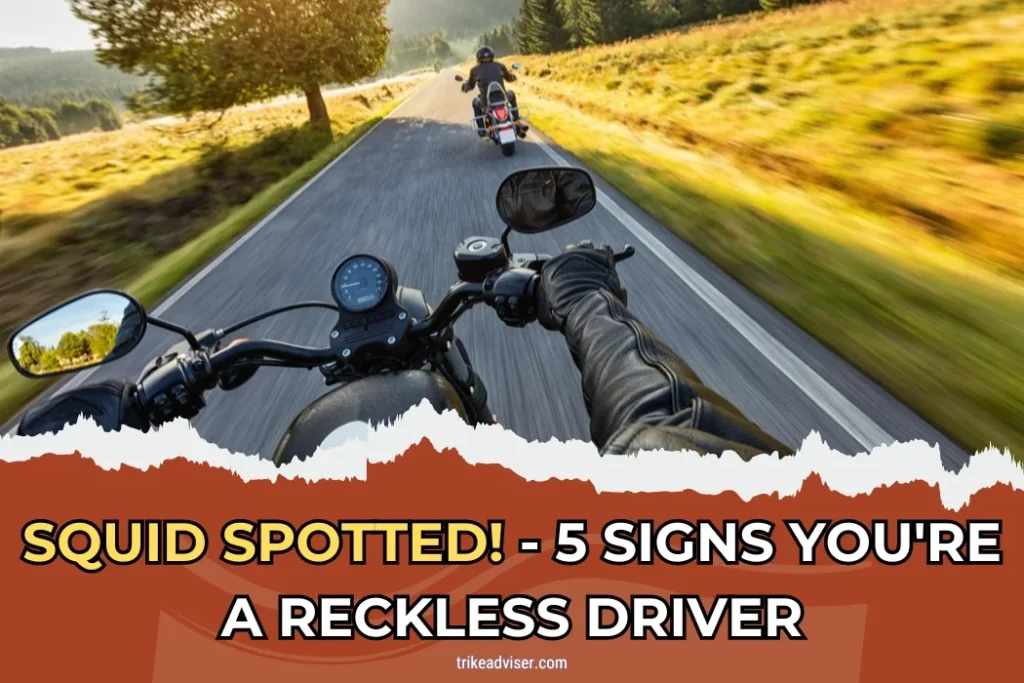Ever had that unsettling moment when your heart skips a beat on the road? Most drivers swear they’re safe behind the wheel. Yet, startling stats paint a different picture.
Every day, the roads narrate tales of near-misses and heart-stopping close calls. Are you the villain in these stories? Maybe you’re not as cautious as you think. Identifying reckless driving isn’t just about blatant errors.
Sometimes, it’s the subtle habits that put you in the danger zone. Think you’re a careful driver? You might need to think again.
You may be on this list if your driving style causes other passengers to grit their teeth or exhale with relief when the ride is over. Let’s explore the five unmistakable indicators that you drive recklessly.
5 Signs That Shows You’re a Reckless Driver
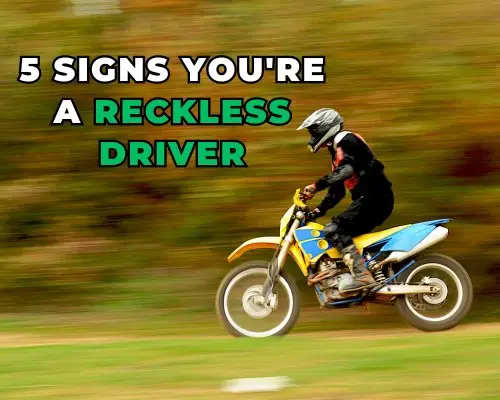
Overconfidence at High Speeds
Ever thought speeding was a skill? Patrick, aka “Ghost Rider,” regularly hits 280 kph on crowded streets. Sure, it looks cool, but it’s pure recklessness.
At such high speeds, reaction time shrinks to nearly zero. A fact to note: At 100 kph, stopping distances are four times longer than at 50 kph.
Imagine at 280 kph! Safety campaigns constantly warn about speed due to its link with fatal accidents. Reducing your speed can dramatically decrease the likelihood of severe accidents.
Ignoring Traffic Laws
Does weaving through traffic and dodging signals sound thrilling? For Ghost Rider, breaking the law is part of the thrill. But here’s the truth: Traffic laws aren’t suggestions—they’re safeguards.
Disregarding them can lead to catastrophic outcomes. Each year, thousands die due to traffic law violations. Reflect on this: Are a few seconds of thrill worth a lifetime of consequences?
Risky Maneuvers in Heavy Traffic
Imagine threading a needle while running. That’s how Ghost Rider rides—performing high-speed stunts amid dense traffic.
These stunts are more than risky; they’re potential death sentences. Statistics show that aggressive driving plays a role in 56% of fatal crashes.
If you find yourself swerving through traffic, take a step back. It’s not just about you; it’s about everyone you share the road with.
Overreliance on Personal Skill
Patrick believes decades of riding make him untouchable. But no amount of skill can control the asphalt’s unpredictability or another driver’s sudden move.
Every rider’s motto should be “Ride prepared, not invincible.” Regularly practicing defensive driving techniques could be a lifesaver. Remember, even professional racers face accidents, but they respect the race track’s boundaries.
Influence on Others
Videos of dangerous motorcycle stunts have inspired legions. But inspiration can turn dangerous when it encourages risky imitation.
Leaders in the biking community must advocate for safety and responsibility. If you’re experienced, share stories that highlight the consequences of reckless driving, not just the thrills.
Responsible driving campaigns and training can help new riders understand that real skill is about control, not chaos.
The Psychology Behind Reckless Driving
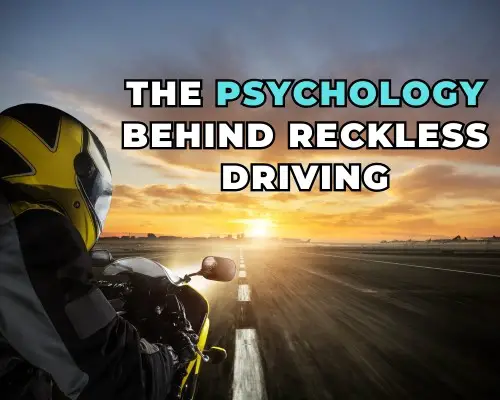
Understanding the Reckless Mindset
Do you know why some folks treat highways like race tracks? It’s deeper than just being late or loving the thrill. The mind behind reckless driving is woven with complex psychological threads.
Key Psychological Traits of Reckless Drivers
- Sensation-Seeking: Some people crave adrenaline rushes like others crave coffee. They find normal driving dull.
For them, speeding feels as vital as breathing. Research shows these thrill-seekers often underestimate risks. They’re chasing the high, not pondering the fallout.
- Impulsiveness: Ever made a snap decision you regretted? Impulsive drivers make those daily. Their need for immediate satisfaction can lead to abrupt lane changes or speeding, escalating the risk of crashes.
- Stress Influence: For many, the car becomes a pressure cooker. Elevated stress levels can cloud judgment, pushing drivers toward riskier behaviors as they seek relief behind the wheel. The reality? Higher stress often equals higher danger.
Driving Personalities Prone to Risk
- The Rushed Driver: Always running late? These drivers treat every green light as a ticking bomb. Their constant rush boosts the odds of aggressive driving behaviors.
- The Emotional Driver: Strong emotions can hijack the mind. Whether boiling with anger or floating on cloud nine, emotional drivers are distractions waiting to happen. Their clouded judgment can make a split-second seem like an eternity, often with dire consequences.
- The New Driver: Fresh on the roads, new drivers might think they’ve got it all figured out. This overconfidence can lead to misjudging risky situations, increasing accident probabilities.
- The Fatigued Driver: Think driving sleepy is no big deal? It’s almost like driving drunk. Fatigue slows reaction times and muddles thinking, making safe driving nearly impossible.
Breaking the Cycle
Knowing what drives reckless behavior can spark change. If these descriptions sound familiar, consider these steps to rein in the risks:
- Self-Assessment: Honestly, evaluate which of these traits you exhibit. Awareness is the first step toward change.
- Stress Management: Techniques like mindful breathing or calming playlists can transform your drive from nerve-wracking to peaceful.
- Educational Programs: Defensive driving courses don’t just teach techniques—they can alter perspectives, showing drivers the real impact of their choices.
Understanding the psychology behind the wheel isn’t just academic—it’s potentially lifesaving. Remember, the rush of speed is fleeting, but the aftermath can last a lifetime. Choose to drive not just for the thrill, but for the journey and everyone on it with you.
Role of Law Enforcement in Curbing Reckless Driving
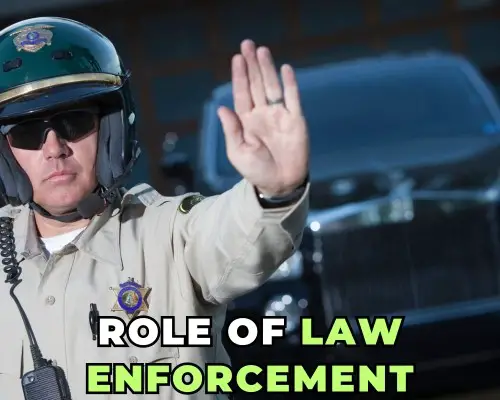
Law Enforcement: Guardians of the Road
Imagine traffic police as more than ticket dispensers; they’re the lifelines of our roads. By maintaining vigilant watch, they prevent the thrill of speed from becoming tragic tales.
Enforcement Tactics to Reduce Recklessness
- Active Monitoring: Visualize this: officers equipped with radar, ready at hotspots for speeding. They aim to curb reckless behavior before it causes harm. Speeding, a major killer on roads, contributes to 26% of all traffic deaths.
- Traffic Stops and Interventions: Each stop is more than a penalty—it’s a chance to think twice. Traffic police provide not just a ticket, but a moment to reflect on the dangerous consequences of risky driving.
Educational Outreach by Law Enforcement
- Community Programs: Imagine driving simulators showing the dizzying effects of speeding, or real stories from accident survivors. These programs change mindsets from reckless to reflective.
- Public Campaigns: Campaigns like “Click It or Ticket” dramatize the importance of safe driving with impactful stories. They bring the harsh realities of reckless driving close to home.
The Legal System’s Role in Managing Driving Behaviors
- Legal Consequences: Think about it: a reckless driving charge can spike your insurance costs and affect job opportunities. The fallout from a fleeting thrill can last for years.
- Deterrence Through Penalties: The threat of losing driving privileges puts things into perspective. It’s about making drivers consider if ignoring a stop sign is worth the risk.
The Synergy of Enforcement and Education
When enforcement meets education, attitudes shift. Understanding the reasons behind the rules leads to better compliance.
- Community Feedback Loops: Local town halls let residents voice traffic safety concerns, helping police to focus their efforts where needed most.
- Ongoing Evaluation: Law enforcement uses data to refine their approaches, like noting reduced accidents at a busy intersection after increasing patrols.
Reflecting on the role of law enforcement in curbing reckless driving reveals their dual focus: enforcing laws and educating the public.
Every interaction, whether a ticket or a talk, is a step towards safer roads. In road safety, we’re all partners—officers and drivers alike, sharing the journey towards fewer accidents and safer travels.
Safety Technology and Reckless Driving
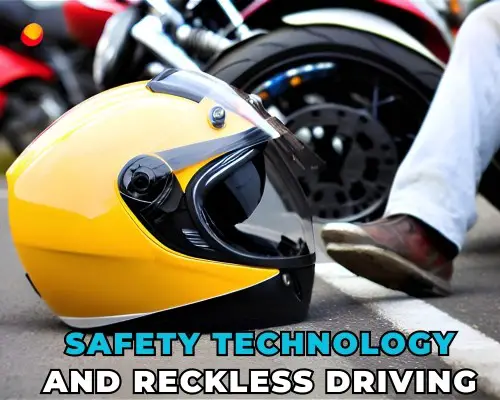
Modern Vehicles: A Shield Against Recklessness?
Think of modern cars not just as transport, but as guardians equipped with tools that jump into action when danger looms. But even the best guards have their limits, especially against the unpredictability of reckless driving.
How Safety Features Soften the Blow
Automatic Emergency Braking (AEB): Imagine cruising along, your mind drifts for a split second, and suddenly traffic halts.
AEB senses this and brakes for you, potentially saving you from a nasty crash. Studies show it can reduce serious crashes by 49% and injuries by 53%.
Blind-Spot Monitoring: Ever feel the sudden terror when you nearly blend in with a covert vehicle? This function makes lane changes safer by warning you when there are automobiles in your blind spot.
Lane Keeping Assist: Drifting out of your lane? This system gently nudges you back, keeping you aligned and out of harm’s way on multi-lane roads.
The Shortcomings of Safety Tech
These advanced features aren’t foolproof:
Overconfidence Can Be Dangerous: The more secure drivers feel with these technologies, the more risks they tend to take. It’s a paradox where safety features could invite more daring behavior.
Gaming the System: Some drivers learn to exploit the technology’s limits, taking risks in conditions where the tech is less effective, like poor weather, thereby increasing the likelihood of accidents.
Not a Fix-All Solution: No matter how advanced, technology can’t anticipate every variable or compensate for all types of human error, especially in high-risk driving situations.
Maximizing Technology While Staying Safe
How do we leverage these innovations without becoming over-reliant?
Education is Key: Drivers must understand the capabilities and boundaries of their vehicle’s safety features. Recognizing that these tools support rather than replace attentive driving is crucial.
Maintenance is important because it guarantees that your car’s technology will operate properly when you need it most. Make sure it is up to date and in good operating order.
Promote Responsible Driving: Driving courses and public campaigns should reinforce that these technologies are designed to assist, not absolve drivers from driving responsibly.
As an Amazon Associate, I earn from qualifying purchases, at no additional cost to you. Read Our Affiliate Disclosure.

